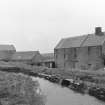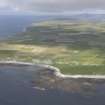Pricing Change
New pricing for orders of material from this site will come into place shortly. Charges for supply of digital images, digitisation on demand, prints and licensing will be altered.
Upcoming Maintenance
Please be advised that this website will undergo scheduled maintenance on the following dates:
Thursday, 9 January: 11:00 AM - 3:00 PM
Thursday, 23 January: 11:00 AM - 3:00 PM
Thursday, 30 January: 11:00 AM - 3:00 PM
During these times, some functionality such as image purchasing may be temporarily unavailable. We apologise for any inconvenience this may cause.
Birsay, Boardhouse Mills, Old Meal Mill
Watermill(S) (Period Unassigned)
Site Name Birsay, Boardhouse Mills, Old Meal Mill
Classification Watermill(S) (Period Unassigned)
Canmore ID 241046
Site Number HY22NE 29.02
NGR HY 25489 27475
Datum OSGB36 - NGR
Permalink http://canmore.org.uk/site/241046
- Council Orkney Islands
- Parish Birsay And Harray
- Former Region Orkney Islands Area
- Former District Orkney
- Former County Orkney
Publication Account (1996)
The three mills surviving at Boardhouse today are themselves the descendants of earlier mills on the burn running from the Loch of Boardhouse to the sea in the Bay of Birsay (see no. 33), and they are fine representatives of a long tradition of milling in what has always been one of the most fertile areas of Orkney. The youngest mill is still working commercially and is particularly well known for its production of beremeal.
The new Barony Corn Mill was the last to be built, and it is a very large three-storey block with a large kiln vent at the apex of the roof, which was completed in 1873; it has three pairs of great illstones, all driven by an iron water-wheel, over 4m in diameter, with wooden buckets. This replaced the Old Barony Corn Mill built in the 18th century, the fabric of which is still in good condition although the water-wheel is incomplete. The third, smaller building is a threshing mill, and it retains its water-wheel intact.
The name Boardhouse implies that this was part of the lord's home-farm, and it is first recorded in 1634. The Earl 's mill is thus likely to have been on the same spot as those that survive, set at the optimum point on the burn for the flow of water from the Loch of Boardhouse.
Information from ‘Exploring Scotland’s Heritage: Orkney’, (1996).




























